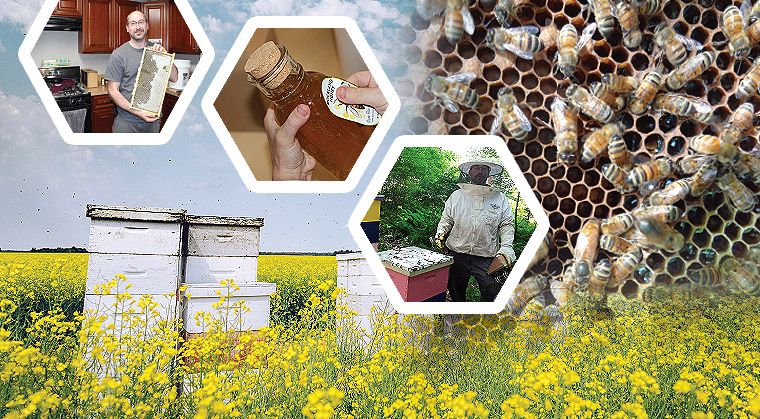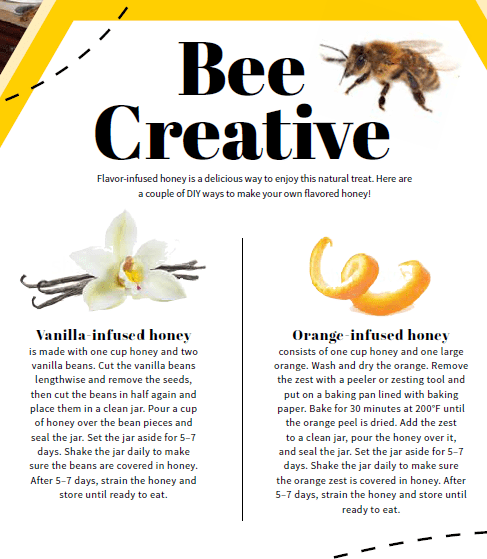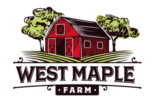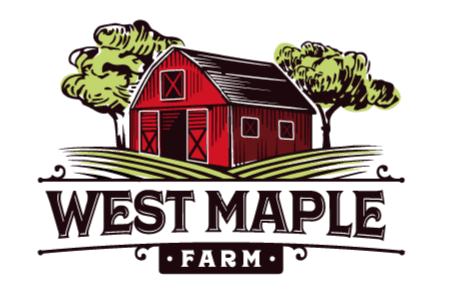Honey cookies, honey cake, and all things honey. Ever wonder where all that honey comes from?
Zev Oster, a Monsey resident, is a jeweler in Manhattan. He is also a beekeeper. Sound like an unlikely combination? These two occupations are not as distant from each other as they may seem. Both involve creativity and skilled hands, two things with which Zev is lucky to have in abundance.
“Beekeeping and honey production began as hobbies, then grew into something larger than I’d ever imagined,” the owner of Rockland Honey shares. “Bees have always fascinated me, so at one point I decided to educate myself about beekeeping and I then decided to order two boxes of bees online.” Zev explains that Rockland Honey sells honey produced locally by his own bees, in addition to factory-produced organic honey under the hechsher of the OU, as well as a local Monsey hechsher. This honey comes in 12 delicious flavors including Orange Blossom, Clover, Alfalfa, Tulip Poplar, and Avocado, just to name a few. Yum!
I wonder why Rockland Honey sells factory produced honey if they make their own honey.
“Interestingly enough,” Zev replies, “Honey gets its flavor from the type of flower from which the bees take nectar. Since our bees fly all over Rockland County, they forage from a variety of flowers. Therefore, we can’t name our honey a specific flavor,” Zev explains. “You need acres and acres of the same type of flower to call honey a specific variety. Our honey is local wildflower, honey which is a blend of all flowers in the neighborhood. If I want to sell several honeys in different flavors, I need to also stock honey produced in other areas.”

I went to visit Zev’s basement where the local honey production takes place. The process of extracting and bottling the honey is interesting to watch. First Zev shows me an empty bee frame. It consists of a wooden frame with a plastic foundation. The whole center is made up of small octagon shaped indentations which the bees use to build up wax honeycombs in which to place the honey, pollen, or eggs. The bees are actually able to make these wax combs on their own, but since that would take considerably longer, Zev provides it for them. The bees need to consume eight pounds of honey in order to produce one pound of wax! Can you imagine eating eight pounds of honey?
Zev expounds a bit as he indicates rows of frames that are placed in boxes that are stacked one on top of another in piles of approximately four, each separated by a metal grate in the middle.
“Each box has ten frames. The two bottom boxes are where the queen bee lays her eggs, the top two boxes is where they store honey. In the middle, a metal grate is placed to keep the queen bee from going into the higher section where the honey is kept. The Queen is larger than the other bees, so she cannot fit through the metal grate while the regular bees can.”
“Why do you want to keep the queen bee out of the honey?” I wonder.
Zev smiles.
“The Queen bee’s job is to lay eggs which then become baby bees. Queen bees lay about 1,500 eggs a day! We don’t want her eggs to get into the honey.”
Did you know that a bee’s lifespan is just six weeks? Because they work so hard, they use up all their strength in such a short time. Once the bees make the wax octagon frame they begin filling it with honey and then they seal it with more wax.
“When we remove the honey-filled frames from the box, we use a metal utensil resembling a comb to remove the wax covering that the bees placed over the honey. Only then can we remove the honey,” Zev explains.
He proceeds to demonstrate with one of the frames that had been removed that morning from this beehive. He shows us how he opens the wax covering with the fork-like tool and then places the tray in a machine that spins quickly. The honey separates and is siphoned into a large vat.
I’m treated to a taste of this fresh honey, which is divine. It even has a faint flavor of flowers in it.
“How do you make sure that pieces of the wax don’t get mixed into your honey?” I ask.
“Once we remove the honey from the big vat we put it through a double strainer so that all the wax stays out. We then melt the wax and use it to seal the corks of the glass bottles after we fill them.
“But before we seal the glass bottles, they are filled with the purified honey. They are then corked, and finally dipped in the wax,” Zev continues. “The filled bottles are then labeled with a sticker after which they are ready to be shipped to the stores to be sold.”

My visit to the Oster basement was truly fascinating. It was amazing to see the process that goes into producing just one jar of honey. The second half of my trip was just as wonderful and really helped me appreciate the life of a bee.
I go with Zev to one of the four locations where he keeps bees.
“I have four locations because there is a maximum number of bees that can be productive in a single location. If there are too many bees in the same place, it is counterproductive,” Zev points out.
Now for the fun part. We don white beekeeper jackets and hats with a net covering as well as gloves that extend up the arm. Zev warns me that this getup is not 100% guaranteed to prevent stings but his relaxed attitude keeps me calm.
Once we are suited up, we enter the area where the bees are kept. I am cautioned to walk behind the box, not in front of it, where the bees enter and exit.
“You don’t want the bees to think of you as a threat,” Zev explains. “If you walk behind their homes, there is a much smaller chance of getting stung.”
As we approach the hive, which Zev intends to open (yikes!), Zev uses his bee smoker. Zev points out that before opening a hive completely he opens it just a little and puffs in a little smoke. This way, the bees think there is a fire and they keep busy gorging on honey. The smoke also disturbs their communication, keeping the beekeeper safer.
Zev removes a wooden frame from inside the hive box and it’s covered in bees! I am able to see the different stages of what the bees have accomplished, where they made the wax frame and where they filled honey and sealed it. We even got to see the Queen Bee and her worker bees. The tour of the hives was nothing short of spellbinding.
“Our honey flow, when there is actually honey coming in from bees, is different every year depending on when the flowers bloom. It happens sometime during the months of May, June, and July. Honey can either be taken out constantly throughout those months or it can be taken all at once at the end of the season.” A single hive can produce anywhere from 20–60 pounds of honey!
Beekeeping is a delicate process and is a lot harder than it looks. “Newly established hives do produce honey but usually not enough for us to take out during the first year, as they need all the honey they produce for their own survival.” Zev explains. “Sometimes we need to feed the bees sugar water in the fall so they make it through the winter. Over the winter the bees eat stored honey and keep warm by flexing their wing muscles to generate heat.”
This year, the bees at Rockland Honey produced 1,300 pounds of honey, and Zev is hoping for an even larger amount next year. Now where did I put that honey cake recipe?
Interested in a bee tour?
Tours of the bee farm can be booked at www.westmaplefarm.com or by calling 845-288-1978.
Read on Original PDF HERE

